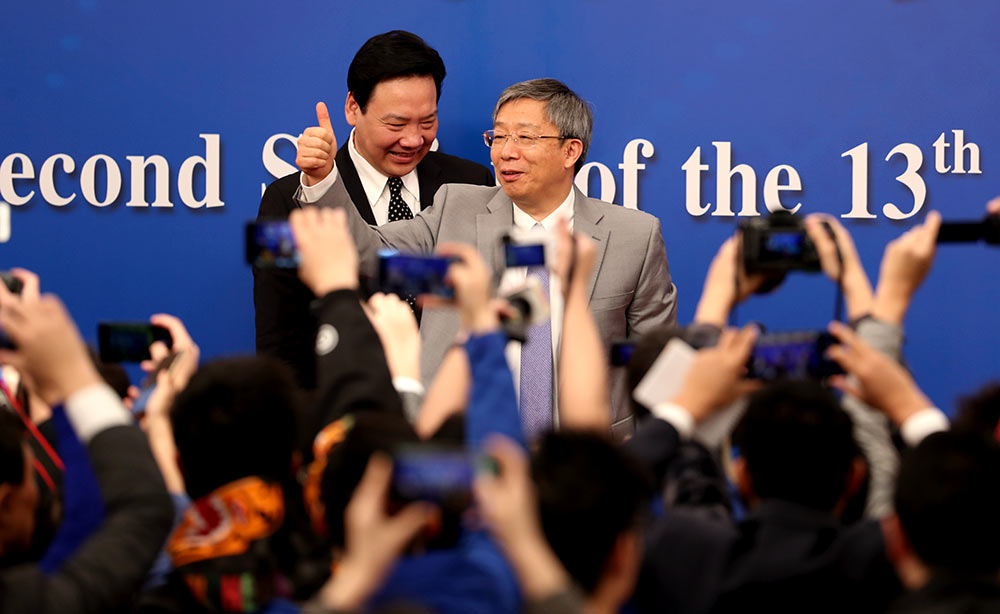Central bank: Monetary policy has wiggle room
China's "prudent" monetary policy stance has not changed and even has room to lower interest rates and increase liquidity, depending on the domestic economic outlook, Yi Gang, governor of the central bank, said on Sunday.
China's "prudent" monetary policy stance has not changed and even has room to lower interest rates and increase liquidity, depending on the domestic economic outlook, Yi Gang, governor of the central bank, said on Sunday.

People's Bank of China Governor Yi Gang (center) interacts with reporters after a news conference in Beijing on Sunday as Vice-Governor Chen Yulu passes nearby. [Photo by Feng Yongbin/China Daily]
The target this year is to maintain a monetary policy that is neither too tight nor too loose, and to keep the broad money supply and aggregate financing growth consistent with nominal GDP growth, Yi said at a news conference at the ongoing session of the 13th National People's Congress.
China's M2, a broad measure of the money supply that covers cash in circulation and all deposits, rose 8 percent from a year earlier to 186.74 trillion yuan ($27.8 trillion) at the end of February, the People's Bank of China reported a few minutes before the news conference. The growth pace slowed from January's 8.4 percent.
Financial institutions issued 885.8 billion yuan in new loans in February, down significantly from the record-high 3.23 trillion yuan in January, the bank reported.
After fast credit growth in January, the financial data have returned to normal, said Wen Bin, chief researcher at China Minsheng Bank. "To maintain a prudent policy stance will be supportive of deleveraging and help prevent financial risks," Wen said.
Yi noted that China's overall debt-to-GDP ratio-the macro leverage level-had dropped to 249.4 percent by the end of 2018, 1.5 percentage points lower than a year earlier, as the authority has tightened financial regulations and cracked down on shadow banking.
The central bank will evaluate domestic economic conditions, the key variable, as it sets policy, and will work to lower real interest rates and reduce financing costs for small and private companies, Yi said. "China still has some room to cut the reserve requirement ratio, but less than in previous years," he added.
After five cuts of reserve ratio, totaling 3.5 percentage points since last year, the current average level of the ratio stands at 12 percent, approximately the same as in some developed countries, he said.
The world's leading central banks reversed their monetary policies to a more dovish stance recently in response to a less cheerful global economic outlook. The Federal Reserve in the United States has put rate hikes on hold. "The global economy is still under downside pressure," Yi said.
The exchange rate for the yuan fluctuated between 6.28 to 6.97 against the US dollar, or within an 11 percent band, and China's foreign exchange reserve stayed above $3 trillion, according to the central bank.
"The yuan has been influenced by market forces just like any other currency for a very long time now, and any assumption that China could be, for whatever reason, deliberately influencing its currency is very wide of the mark," said Jameel Ahmad, global head of currency strategy and market research at FXTM, a global foreign exchange platform.

